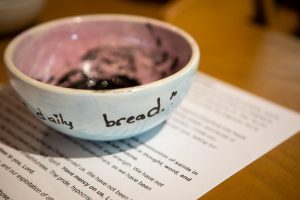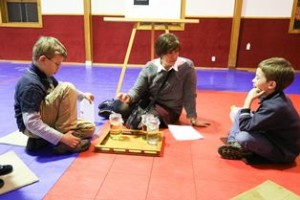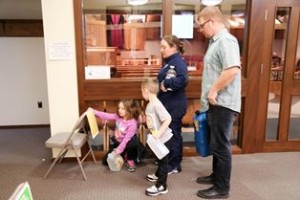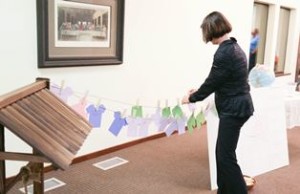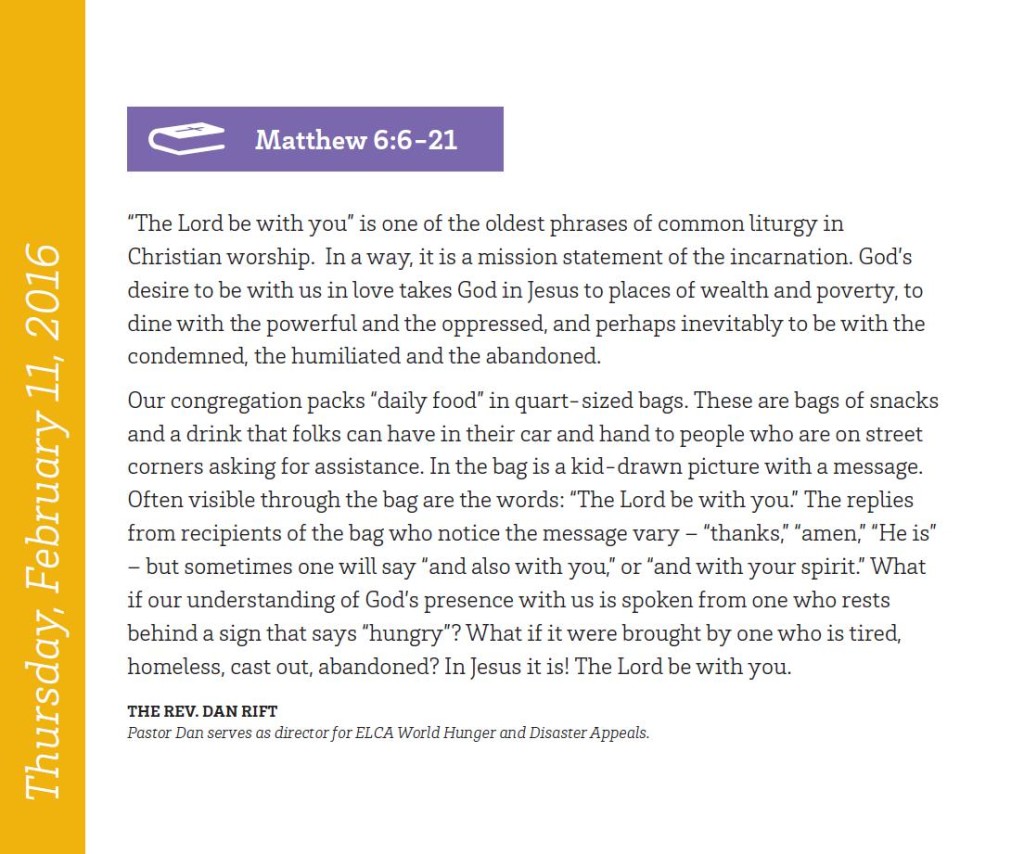Honesty
“For [God] did not despise or abhor the affliction of the afflicted; [God] did not hide [God’s] face from me, but heard when I cried” (Psalm 22:24).
When Kamini Dhurvey was just a child, her mother died and her father remarried. Her stepmother abused Kamini, and her father did not step in to protect her from his new wife. Unprotected and unsafe, Kamini left home when she was older and eventually found a place to rent and a job in a small shop.
Even out on her own, she did not feel safe. Kamini feared that the landlord who owned her residence would hurt her. The security she tried to find in leaving home eluded her. Through a door-to-door survey, Kamini learned about Naari Shakti, a project of the Evangelical Lutheran Church in Madhya Pradesh in India supported in part by ELCA World Hunger. Naari Shakti works for gender equality through advocacy for women’s rights, provides training in tailoring and computer skills, and offers emergency medical support to girls and women in vulnerable situations. The project also provides housing assistance and psychosocial support to those who need it.
At the Naari Shakti project office, Kamini found a safe space to tell her story and people who would welcome her. With counseling and support from the project, she was able to leave the place she was renting and move into a hostel for girls. The project later arranged for Kamini to stay in a women’s rehabilitation center, where she is living and pursuing her studies.
Before Kamini moved to the rehabilitation center, project staff tried to contact her father. But her father told the staff that he no longer wanted anything to do with her and that it was up to her to live her life as she wanted. She was no longer welcome in her father’s home. With nowhere else to go, Kamini has found a home at the center. The Naari Shakti program provides her a safe place to live, books and additional support for her education.
Around the world, 690 million people face hunger, and each of them has a story to tell. Hunger is rarely just a matter of lacking food. Rather, it is often a pernicious and persistent symptom of much deeper pain, of much deeper need. Unfortunately, stories like Kamini’s are not uncommon. For women and girls around the world, abuse, violence and inequality lie behind the higher rates of hunger they face. Globally, women are 13% more likely than men to experience food insecurity and almost 27% more likely to be severely food insecure. They are also more likely to be victimized by violence, more likely to do work with little or no pay, and less likely to have access to credit to start a home or business.
If we are going to end hunger, we have to start by being honest about the stories of pain, exploitation, injustice and violence that lie behind it. We must start with honesty about what hunger is and what it is not.
Hunger is not accidental. It is the result of inequality, marginalization and injustice that inhibit one’s ability to access the resources one needs to live.
Hunger is not merely the physical sensation of going without food. It is an insidious reality that affects the whole person — physically, emotionally, psychologically and socially.
Hunger is not merely a calculation of calories. It is a measure of the extent to which a person is constrained in the pursuit of their own well-being.
Ending hunger means being willing to enter into the sometimes painful stories of neighbors in need. It requires that we accompany one another down difficult roads with honesty about what we may find. Lent commemorates Jesus’ journey to the cross and thus demands of us honesty about the death-dealing pervasiveness of sin that would crucify truth in order to silence it. This makes Lent an appropriate season to consider what it will take to arrive at the vision of a just world where all are fed. Lent, after all, is about honesty. In this season, we are called to be honest about the depths of our sin, including the many ways that we, as the church, have fallen short in meeting the needs of our neighbors. Lent is about being honest with ourselves and with others about the depth of need in our world.
And Lent is also a season to be honest about the God who calls to us. In the psalm for this second week in Lent, the psalmist rejoices that God “did not despise or abhor the affliction of the afflicted … [nor] hide [God’s] face from me, but heard when I cried” (Psalm 22:24). In the Gospel story of Jesus’ transfiguration, we hear the voice of God echo over the mountain: “This is my Son, the Beloved; listen to him!” (Mark 9:7).
The honesty to which we are called compels us to confront the pain of the world with a vision to transform it. Both the pain of the world and the vision to transform it are clear in the stories of Kamini’s life and the Naari Shakti project. It is the difference between the father who rejects her and the God who welcomes her. To know ourselves as claimed, named and welcomed by God is an act of truth-telling about who we really are — and how much that may differ from who the world thinks we can be. Abuse and rejection are part of Kamini’s story, and accompanying her means being honest about that. But they aren’t the whole of her story, and accompanying her means being honest about that too.
The honesty formed by faith compels us to tell the truth about hunger — and the truth about the God who promises its end. God’s promise of a just world where all are fed pulls us into the world to confront sin in all its forms, refusing to hide from affliction and yet refusing to let affliction be the end of the story for ourselves, our neighbors or our world. It is the honesty of an Easter people, who can deny neither the reality of the cross nor the reality of the empty tomb. To end hunger, we will need to be honest with ourselves about both.
Reflection Questions
- How have you experienced or felt God sustaining your strength in challenging circumstances?
- What are some things you hunger for other than food (such as companionship, love and acceptance, or justice, clean air and water)? Does your community provide these things? How might you and your community better provide things that feed people in mind, body and spirit?
- In the Naari Shakti project, Kamini found the resources she needed to develop her strengths and make meaningful choices for herself and her future. How does your church create opportunities for neighbors to develop their strengths and make meaningful choices for themselves and your community?
- What kind of honesty will it take to end hunger in your community? Where is there a need for truth-telling and truth-seeking when it comes to the challenges you and your neighbors face?
Prayer
Gracious and loving God, through the power of the cross and the glory of the empty tomb, you bring us the truth of your love for us and for all people. Help us to live into that truth and to share it with the world. Amen.
Learn more and follow ELCA World Hunger’s 40 Days of giving throughout Lent by visiting ELCA.org/40days.


